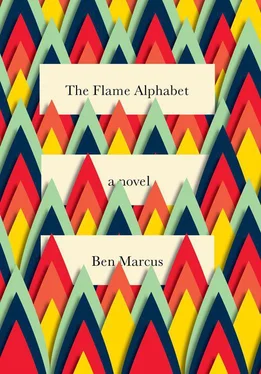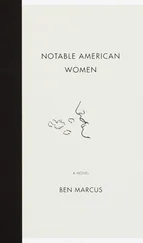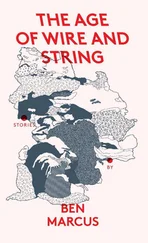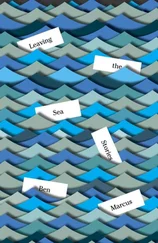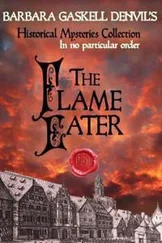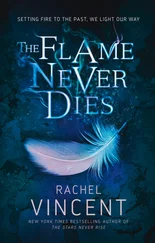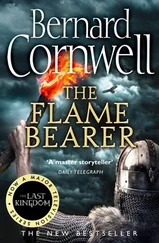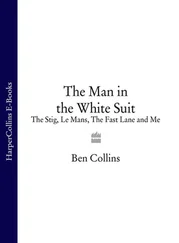The man tugged at the earphones, righted himself, and shook his head, trying to tear them free, but they were fastened tight. The observers, near enough to enter the dome and help him, showed no reaction.
With those lemon yellow headphones and his black suiting, the subject looked like a bee trapped in a jar. From his gestures one might conclude that the headgear was burning his ears.
He was the first of many I would see. I would never learn what they called them, since naming of this sort had no application anymore, and anyway could not be shared.
Volunteer , test subject , language martyr : tasked out for experiments to test the toxicity of the languages being devised by people like me.
By the time I was ushered inside, he whimpered silently under the glass, having given up on removing his headphones, which one supposed were transmitting language his body could not bear.
Oh, one supposed this all right. A froth of bubbles clouded from his mouth.
I did not look at his face very carefully, but I would see him again. And again. And again. Within weeks, once I took up my new role, this man’s agony would be my responsibility alone. The voice pumping poison into his body may as well have been my own.
On my first day of work in the research wing, in a private office with a view that gave out onto the rock face I would think of as Blank Mountain, I checked the lockers for medical equipment.
I had no access to my car, and no one would retrieve my gear, my samples. My mimed requests were ignored. Or a blanket was tossed over my hands and someone bowed before me, head averted, and squeezed my wrists so tightly I fell.
I got the message. Sign language was restricted unless new forms of it were being tested under controlled circumstances. If you forgot this and brought your hands into gestural action you were subdued. They came out of nowhere and they did not look at you but if you tried out a language, even a silent one, they put a stop to it fast.
In my new office I believed I could resume my work with chemicals, with vapors and mists and smokes, with augmented medicines. Even if LeBov had been Thompson, it didn’t mean that the medical work was a dead end. I’d given some thought to this. LeBov trafficked in long displays of falsity, perfecting his untruths, and I’d been listening to Rabbi Thompson speak from the Jew hole for years. If there was identity subterfuge at work, it did not automatically negate the recommendations of Thompson, whoever he really was.
Other mysteries remained. I had yet to determine what went into LeBov’s speech-enabling grease. I was also unclear about the white collar at the Oliver’s.
But in the low cupboards and drawers, in the cabinets mounted above a faded slate counter, I found no beakers, tubes, or burners. The raw materials for a chemical kit were absent. There were no raw materials for anything, no bulk drugs, no running water or salt bag. The medicine cabinet was empty of medicine, the refrigerator was tilted open, rimed with mold, gutted. Its power line curved around the back, with no sign of an outlet.
A drafting desk stood at the window, and in its drawers I found paper and the makings of a lettering kit. Rubber stamps, ink pads in different colors, and a set of baby sawtooth knives. Alongside these were a clutch of chrome pens, bottles of ink, an engraver’s kit, a set of reference books labeled with a poison symbol, and, most interestingly, a scroll of self-disguising paper—paper with small windows factored in that could be enlarged with a dial—that allowed you to see only the script character you were presently reading, and nothing else, not even the word it belonged to. It broke the act of reading into its littlest parts, keeping understanding at bay.
Smallwork.
Unless you dialed open the window at your peril, this device revealed only part of a letter at a time, and even of that part it revealed so little that you might never guess that this mark on a page was participating in the larger design of an entire letter, which itself joined others in a set of interlocking designs called words, that would coalesce on the page to mean something, and thus bring a reader to his knees. This paper let you forget all that.
I sat down and fiddled with the apparatus, trying it out on whatever text I could find. Such redactions would keep my own work from poisoning me. If I desired, with the self-disguising paper, I could write with the perfect impassive remove that would keep me detached from the very thing I was writing. I’d have full deniability.
Elsewhere in the desk were some retired alphabetical designs, produced perhaps by my predecessor.
I pictured a man with blackened limbs, sitting on the high stool with his stylus. Of course he died of his own work. One day he lets down his guard, forgets his language shield, starts looking through his alphabets, and they poison him.
The work he left behind came stuffed in a binder. Had any of it mattered to anyone at Forsythe, had it somehow transcended the limitations of our current repulsive alphabet, I figure I would have known—it would not be here, we would not be here—so this was failed work. But since it was failed work, I wanted at least not to repeat it, which meant I needed to study it, to understand what went wrong. And that struck me as problematic. Such work would take me days with the self-disguising paper, as if I needed to go thread by thread through a pair of trousers in order to determine that they were wearable.
To examine my predecessor’s work I customized the pinhole device, scissoring a thumbprint-size divot from a page of cardboard, then running that cardboard over the materials inside the binder. And with that I toured through his written work, studying dissected parts, the spatter of letters, drops of what must have been his own blood mottled into the page.
Much of my time in those early days at the script design desk was spent creating inhibitors that would keep me from seeing what I was doing.
After some hours of scrutiny I concluded there was nothing here of any use, just examples from our own alphabet, fattened here and there, rendered so erratic that they looked like the lines of an EKG.
My predecessor was poor at his job. He seemed to have looked at our existing alphabet, decided that nothing was wrong with it, and, in fact, if only its parts were emphasized, bolded, the A s fattened, blackened, perhaps, and so on, then all of the sick fakers might finally fall at his feet and praise him.
Or perhaps my predecessor enjoyed sending obviously fatal scripts to the testing grounds. He could watch from his glassed-in perch as the English language quietly picked off test subjects one by one, eating away at everything crucial inside their heads until there was nothing left but mush.
That first day, after studying the examples left to me, I realized what I was meant to do here in my office with no trace of medical equipment: I was meant to test letters, alphabets, possibly engineer a script. I was meant to string together symbols that might be used as code, a new language to outwit the toxicity.
The solution is in scripts, don’t you think?
Visual codes? Except not the ones we know?
Of course LeBov, then Murphy, had said this to me for a reason. And maybe this was it.
Outside, hordes of people sought entrance into Forsythe. A mob of bodies swelled before the gate as if suspended in emulsion. Some had covered their heads. The ones with kerchiefs looked like mummies floating at sea. Others were fitted with masks, dark scarves, some kind of putty that filled their eye sockets.
At the very back of the crowd, keeping their distance from the others, stood a group who had fashioned homemade tackle to defeat language sounds from penetrating their defenses. Headphones reinforced by wood, by metal disk, spread with a cream.
Читать дальше
